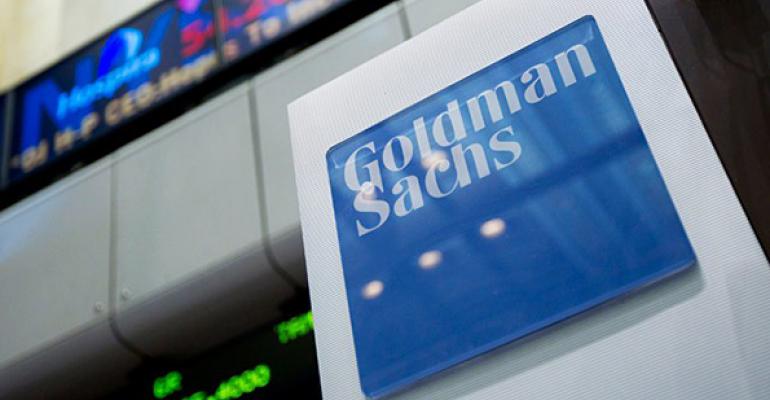(Bloomberg) -- Goldman Sachs Group Inc. is throwing everything but the kitchen sink at boosting its share of the $4 trillion U.S. market for exchange-traded funds -- even mimicking one of its Wall Street foes.
The bank is adopting an approach pioneered by JPMorgan Chase & Co., filing for a line of broad-based index products that could start trading at rock-bottom prices as early as next week, regulatory records show.
After getting off to a blistering start four years ago on the back of a dirt-cheap factor ETF, Goldman dropped behind its Wall Street competitor, which has ridden a strategy dubbed “bring your own assets” to a $29 billion business.
Essentially cloning popular ETFs and moving client cash from those products into its own, the controversial approach may be Wall Street’s best hope for challenging the dominance of State Street Corp., BlackRock Inc. and Vanguard Group.
“As we continue to grow and build out our ETF business, along with our recent acquisitions, it just makes sense in some areas for us to have the building blocks that fuel those portfolios,” said Steve Sachs, head of capital markets for ETFs at Goldman.
Even before this latest chapter, the race between the Wall Street giants had enough twists and turns to power a thriller.
Goldman emerged in 2015, establishing itself as a leader in factor investing with its ActiveBeta U.S. Large Cap Equity fund, ticker GSLC. The product wowed the ETF industry with a fee of just 9 basis points, unheard-of for smart beta strategies -- but newer ventures have stumbled. This year, it introduced a handful of thematic strategies, but they’ve collected less than $50 million.
JPMorgan was relatively quiet until June 2018, when it kickstarted its business with a suite of vanilla ETFs called BetaBuilders. Unlike the more specialized products the bank was hawking up until then, the funds tracked broad developed-market benchmarks -- at thrift-store prices.
It was an inspired play, tripling JPMorgan’s ETF assets to near $30 billion within a 14-month span and powering it ahead of Goldman.
“JPMorgan saw this as a smart move ahead of anyone,” said Bloomberg Intelligence analyst Eric Balchunas. “We’ve seen how hard it is to get any assets. But bringing your own assets gets you mojo, and mojo gets people in the door and investors on the phone.”
The bank made smart moves elsewhere, winning a foothold in the nascent but growing fixed-income ETF market, and planting a flag early in Europe, whose industry is around half the size of the U.S. but growing rapidly.
Goldman has yet to list an ETF in the region despite some high-profile hires, though it plans to commence the business before year-end, a spokesman in London said. That puts it several years behind JPMorgan, which has $2.8 billion in assets there.
Now Goldman hopes to turn the tables on its investment-banking rival by embracing the bring-your-own-assets strategy. The firm already has some experience in the area as the largest owner of GSLC, and its latest foray is fueled by a recent acquisition spree. The bank scooped up S&P’s model portfolio business and United Capital this year, giving it fresh pipelines for flows into its own funds.
However, the approach isn’t without its critics, who argue there are conflicts in directing wealthy clients to a bank’s own ETFs.
“We have internal affiliates in our products, but they are institutional clients and we treat them as such with their own due diligence,” said Jillian DelSignore, head of ETF distribution for JPMorgan’s asset management arm.
The bank’s transfers into BetaBuilders have saved clients about $42 million a year thanks to their low price tag, according to an analysis by Bloomberg Intelligence.
Ironically, if Goldman succeeds in moving wealthy clients to its in-house products, BlackRock may turn out to be the biggest loser, according to an analysis of regulatory filings.
United Capital’s clients hold some $4 billion in the firm’s iShares line, which could be redeployed into Goldman’s new products. That’s especially true if the funds are cheap.
“The advisers -- by being so brutal with cost obsession -- have created this monster of cost migration,” said Balchunas. “By making moves like this, the banks are able to own the end client and the flows. It’s brutal out there.”
--With assistance from Morgan Tarrant.
To contact the reporters on this story:
Carolina Wilson in New York City at [email protected];
Ksenia Galouchko in London at [email protected];
Elizabeth Rembert in New York at [email protected]
To contact the editors responsible for this story:
Brad Olesen at [email protected]
Yakob Peterseil, Rachel Evans





